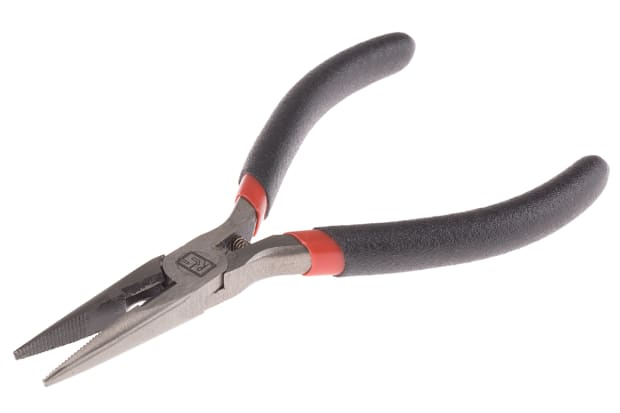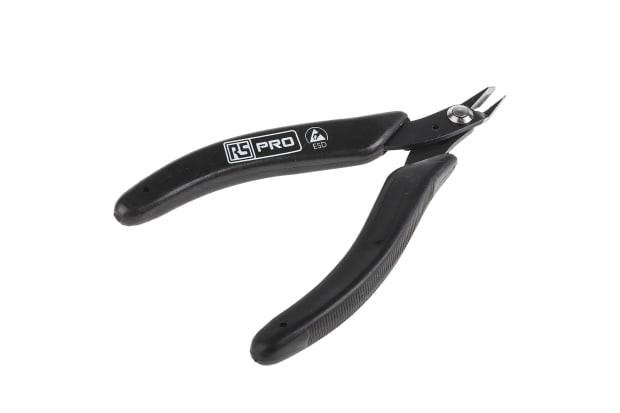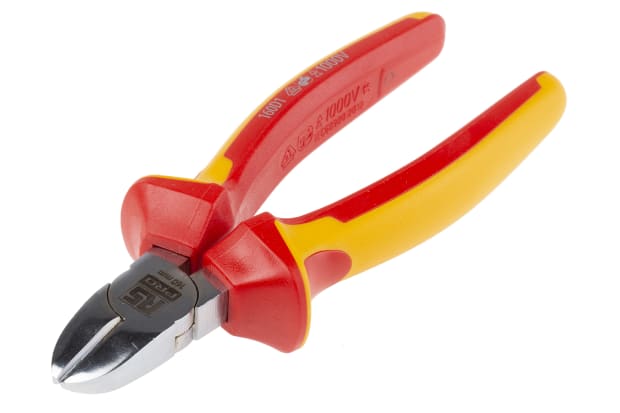- Published 8 Mar 2023
- Last Modified 8 Aug 2024
- 13 min
Explore the Ultimate Guide to Cutters for Every Need

Our essential guide covers everything you need to know about cutters, including different types, their uses, common sizes, and popular brands. Equip yourself with the knowledge to select the best cutter for your tasks.
What is a Cutter?
A cutter is a versatile hand tool designed for cutting a variety of materials, making it an essential instrument in numerous industries and applications. Typically, a cutter consists of two levers connected by a fulcrum, strategically positioned closer to one end. The shorter segment of the tool is known as the jaws, while the longer segment comprises the handles. This design leverages the principles of leverage, allowing users to exert significant force with minimal effort.
When the handles are pressed together, the gripping power is amplified and focused at the point where the jaws meet, enabling the cutter to slice through materials that may be too small or intricate to handle manually. This functionality makes cutters invaluable in tasks ranging from crafting and electronics to metalworking and construction. Cutters come in a wide array of types and sizes, each tailored for specific cutting tasks. The three primary categories of cutters include locking, adjustable, and non-adjustable models, with each type offering unique advantages based on the user's needs. Most cutters are constructed from durable materials such as steel, ensuring longevity and reliability during use.
Exploring the Various Types of Cutters
Cutters are essential hand tools utilised across various industries for cutting, trimming, and shaping materials. Below is an overview of various cutter types, highlighting their unique features and ideal uses.
Side Cutters
Side cutters, also known as diagonal cutters or dikes, are designed to indent and wedge materials apart, providing a cleaner finish than traditional scissors or knives. They excel in cutting soft wires and leads but should not be used on harder materials like nails or screws, as this can damage the tool.
Ideal for:
- Holding, splicing, or cutting leads
- Stripping insulation from wires
Cable Cutters
Cable cutters are specifically engineered for electrical applications. These tools often feature insulated handles to protect against electrical shocks, although it’s crucial to distinguish between non-insulated and insulated models. They are indispensable for cutting through thick cables without crushing the internal conductors.
Ideal for:
- Electrical installations
- Industrial applications
Flush Cutters
Flush cutters are characterised by their angled and narrow pincers, allowing for precise cuts on soft and semi-hard metals. Their design ensures that the cutting edge sits flush against the material, making them perfect for trimming delicate components without leaving sharp edges.
Ideal for trimming:
- Eyepins
- Headpins
- Beading wire
End Cutters
Also known as nippers, end cutters feature a nearly flat head that allows for cutting materials close to surfaces. This design is particularly useful for tasks that require precision, such as cutting leads, springs, nails, and rivets.
Ideal for working with:
- Leads
- Springs
- Nails
- Bolts
- Rivets
Diagonal Cutters
Diagonal cutters are designed to provide precise cuts at an angle, making them ideal for crimping and wedging cables apart. They are commonly used in electrical work, particularly for cutting soft copper or aluminium conductors.
Ideal for:
- Gripping and cutting wires
- Stripping insulation from cables
Additional Types of Cutters
In addition to the main types of cutters mentioned above, there are several alternative models that cater to specific needs:
Wire Rope Cutters
Wire rope cutters are designed to pull the rope into their jaws, creating a clean cut without fraying. These tools are perfect for shearing wire rope and are commonly used in rigging and construction.
Bolt Cutters
Bolt cutters generate substantial torque, enabling them to cut through thick metal materials effortlessly. Their strength makes them a staple in the construction industry for tasks like snipping bolts off containers and cutting through heavy chains or leads.
Lineman's Cutters
Easily recognisable by their unique design, lineman's cutters have a shorter gripping surface and a cutting surface in the middle. They are favoured in electrical and construction tasks for grasping, splicing, or chopping leads and stripping insulation.
Hydraulic Cutters
Hydraulic cutters feature a guillotine-style head that minimises jams and can handle a variety of materials, including wire ropes and solid bars. These tools are primarily used in the power utility and electrical industries for cutting copper or aluminum power cables. They come in various models, including manual and battery-operated versions.
Bent Nose Cutters
Bent nose cutters are a versatile type of plier that can grasp, turn, and bend wires. Their flat jaws allow for gripping and twisting, making them essential in both electrical and mechanical applications. They are available in various lengths to accommodate different tasks.
Diagonal Cutters vs Side Cutters
Diagonal cutters and side cutters are often terms used interchangeably, which can lead to confusion about their distinct features and applications. Both tools are designed to cut wires and cables at an angle, using a method that involves pressing and wedging the material apart, rather than shearing like scissors. This design makes them durable and suitable for demanding professional tasks. However, there are subtle differences between them that can influence their use in specific situations.
Diagonal Cutters
Diagonal cutters, also known as diagonal pliers or dikes, are characterised by their angled cutting edges. This angle allows for precise cuts close to surfaces, making them ideal for delicate tasks where accuracy is paramount. They are compact and lightweight, which makes them easy to handle in tight spaces. Diagonal cutters are particularly effective for cutting smaller wires and are widely used in electronics and jewelry making. Their ability to make clean cuts without leaving sharp edges is crucial for maintaining the integrity of electronic connections and preventing injury in jewellery work.
Side Cutters
Side cutters, sometimes referred to as side-cutting pliers, feature a blade that runs parallel to the handles. This design typically makes them more robust, allowing for the cutting of larger and thicker materials. Side cutters are often used for general-purpose cutting tasks, including cutting aluminum and steel wires. They provide greater leverage, which can be advantageous when dealing with tougher materials. The larger jaws of side cutters enable them to open wider, accommodating bigger items and making them versatile for a range of applications.
The table below provides a clear and concise comparison of diagonal cutters and side cutters, highlighting their distinct features and applications.
Feature | Diagonal Cutters | Side Cutters |
|---|---|---|
Design | Angled cutting edges | Parallel cutting edges |
Cutting Angle | Cuts at an angle | Cuts straight across |
Best Use | Small, delicate tasks | Larger, tougher materials |
Precision | High precision for fine cuts | Good for general-purpose cutting |
Jaw Size | Compact, smaller jaws | Wider jaws for larger items |
Leverage | Less leverage, suited for light work | More leverage, suited for heavy-duty work |
Common Applications | Electronics, jewellery making | Electrical work, construction, metal cutting |
Durability | Durable but designed for finesse | Durable and robust for tough tasks |
Common Cutter Sizes
Cutters can be categorised by either jaw length or overall tool length, both typically measured in millimeters (mm). The size of a cutter plays a significant role in its cutting capacity and the types of materials it can handle. Below, we explore some common cutter sizes and their ideal applications.
- Diagonal cutters: Commonly used for cutting wires and small components, available in several sizes. Standard sizes include 5", 6", 7", and 8", with 7" and 8" being the most common for general use. Smaller sizes, like 5" and 6", are ideal for light-duty tasks, while larger sizes provide more leverage for cutting thicker materials. When selecting a size, consider the material you will be cutting, and the level of precision required.
- Rotary cutters: Popular in quilting and sewing, come in four main sizes: 18mm, 28mm, 45mm, and 60mm. The 45mm size is the most versatile, suitable for a variety of cutting tasks, including fabric and quilting projects. The 28mm size is perfect for intricate patterns and tight curves, while the larger 60mm size is ideal for cutting through multiple layers of fabric and thicker materials. Choosing the right rotary cutter size depends on the type of material and the complexity of the cuts needed.
- Tenon cutters: Used in woodworking to create precise joints. They range from 1/2" to 3" in size. Smaller sizes, like 1/2" and 3/4", are used for detailed projects, such as chair spindles and decorative elements. The 1 1/2" size is the most popular for standard projects, providing a balance between detail and structural integrity. Larger sizes, like 2" and 3", are better suited for more substantial projects, such as building swings or bunk beds.
- Bolt cutters: Designed for cutting through heavy materials like bolts and chains. They come in various sizes, with larger sizes offering more leverage and cutting capacity. When selecting a bolt cutter, consider the thickness and hardness of the material you need to cut.
Heavy-Duty Wire Cutters
Heavy-duty wire cutters are designed for robust applications, capable of cutting through thick wires and cables with ease. These cutters often feature larger jaws and longer handles, providing the necessary leverage to tackle tough materials. They are ideal for industrial and construction settings where durability and strength are paramount.
Mini Side Cutters
Mini side cutters are compact tools perfect for precision tasks that require access to tight spaces. With smaller jaws and handles, these cutters are well-suited for electronics, jewellery making, and other delicate applications. Their compact size allows for detailed work without compromising control or accuracy.
Large Wire Cutters
Large wire cutters offer a balance between size and cutting capacity, making them versatile tools for a range of applications. They are particularly useful for cutting medium to large gauge wires and are commonly used in electrical work and general maintenance tasks. The extended handles provide additional leverage, reducing the effort required to make clean cuts.
The Essential Uses of Cutters
Cutters are versatile hand tools that find applications across a multitude of industries, including electrical work, jewellery making, and construction. Their ability to cut, trim, and shape various materials makes them indispensable for both professionals and DIY enthusiasts. Below, we explore the diverse uses of different types of cutters, highlighting their specific functionalities and ideal applications.
Wires
Side cutters, also known as diagonal cutters, are primarily used for cutting and stripping wires in electronic components. They excel at safely removing insulation from wires without damaging the underlying conductors, a process known as stripping. Proper stripping is crucial, as nicking the wire can lead to broken connections or electrical short circuits. While knives and scissors can perform this task, they pose a higher risk of damaging the copper wire. Using specialised wire cutters ensures a clean cut and maintains the integrity of the wire, making them the preferred choice for electricians and hobbyists alike.
Nails and Screws
For cutting nails and screws, bolt cutters are the tool of choice. These heavy-duty cutters provide the necessary leverage to snip through tough materials. To effectively use bolt cutters, position the tool as close to the shank of the screw or nail as possible. If the fastener is too tight to reach the shank, simply snip off the head instead. Bolt cutters are particularly useful in construction and maintenance tasks, where quick and efficient cutting is required.
Jewellery and Crafting
In the realm of jewellery making, specialised cutters such as flush cutters and wire cutters are essential. The unique design of flush cutters allows for precision cuts that minimise the risk of leaving sharp edges, ensuring a polished finish on delicate jewellery pieces.
Heavy-Duty Cutting
For more robust cutting tasks, hydraulic cutters are available. These tools utilise hydraulic power to cut through thick cables, wire ropes, and solid bars with ease. Hydraulic cutters are commonly used in the power utility and electrical industries, where they efficiently handle large conductors and overhead lines.
Choosing the Right Cutter Size
Choosing the appropriate cutter size depends on the specific tasks you intend to perform. Here are some factors to consider:
- Material Type: The hardness and thickness of the material you need to cut will influence the size of the cutter. For instance, cutting thicker or harder materials requires larger cutters with more leverage.
- Task Precision: For tasks requiring precision, such as cutting small wires or intricate components, smaller cutters are preferable. They offer better control and access to confined spaces.
- User Comfort: The size of the cutter should also match the user's hand size and strength. Larger cutters may provide more leverage but can be cumbersome for users with smaller hands.
- Cutting Capacity: It's important to select a cutter that exceeds the cutting capacity required for your tasks. For example, if you frequently cut 18 AWG wire, consider a cutter rated for 16 AWG to ensure longevity and maintain sharpness.
Safety Tips for Using Wire and Cable Cutters
Using cutters, especially in electrical and industrial contexts, requires attention to safety and technique to ensure both efficiency and protection from injury. Here are some essential tips and guidelines for using wire and cable cutters effectively:
- Wear Protective Gear: Always wear safety goggles to protect your eyes from flying debris and particles. Cut-resistant gloves can also provide an extra layer of protection against accidental cuts or abrasions.
- Proper Cutting Technique: Aim to cut at right angles to the material to ensure a clean cut and avoid damaging the tool. Avoid wiggling the cutter or bending the wire back and forth against the cutting edges, as this can dull the blade and compromise the cut.
- Tool Selection: Use the appropriate tool for the task. Avoid using wire cutters on nuts and bolts; instead, use a wrench for these tasks. For hardened cables, ensure that the tool is specifically designed to handle such materials to prevent damage to the cutter.
- Tool Maintenance: Regularly oil the hinge of your cutters with a drop of oil to maintain smooth operation. Ensure the cutting edges are sharp, as dull blades require more force, increasing the risk of injury and reducing the quality of the cut.
- Avoid Excessive Force: Do not use excessive force when cutting, as this can lead to accidents. If a lot of force is needed, the blade might be dull, or the tool may not be suitable for the material.
- Handle Design: Choose cutters with a grip span between 6cm and 9cm to prevent hand fatigue and avoid pinching your fingers when the tool is closed. Ensure the handles are comfortable and provide a secure grip.
- Safety Precautions: Avoid using cushioned handles when working with electrical wiring, as they may not be insulated and could pose a risk of electrical shock. Keep cutters away from excessive heat to prevent damage to the tool.
- Proper Storage: After use, store cutters in a safe place, away from children and in a location where they won't be accidentally used or damaged. Ensure the blade is retracted or covered when not in use.
- Cutting Motion: When using pliers or cutters, apply pressure by pulling the tool towards you rather than pushing away. This technique reduces the risk of slipping and potential injury.


